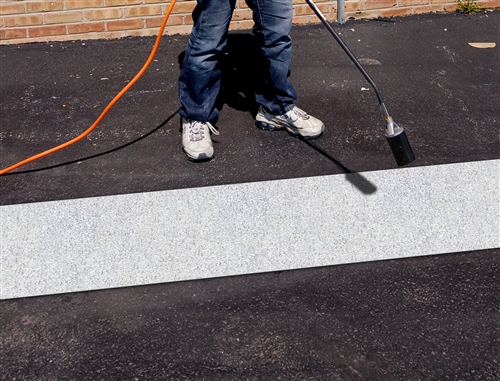Thermoplastic is a pavement marking material that is a 100% solid, environmentally and user safe compound. A mixture of glass beads, pigments, binder, and filler materials, thermoplastic, as its name suggests, becomes liquid when heat is applied.
Thermoplastic Types
Two basic types of thermoplastic are available. The two, hydrocarbon and alkyd, take their names from their binder types.
Hydrocarbon thermoplastic is made from petroleum-derived resins.
- Hydrocarbon tends to be more heat stable, with more predictable application properties, than alkyd
- Because it tends to break down under oil drippings and other automobile contaminants, hydrocarbon is recommended for long-line, skip lines and edge-line applications and not for high-traffic areas where cars are stationary.(Such as stop bars , crosswalks, turn arrows)
Alkyd thermoplastic is made from wood-derived resins that is resistant to petroleum products. Alkyd thermoplastic exhibits some advantages over hydrocarbon materials such as:
- higher retroreflective values
- being oil impervious
- being more durable
Alkyd is recommended for inner-city markings and other high-traffic areas where petroleum drippings are common.

